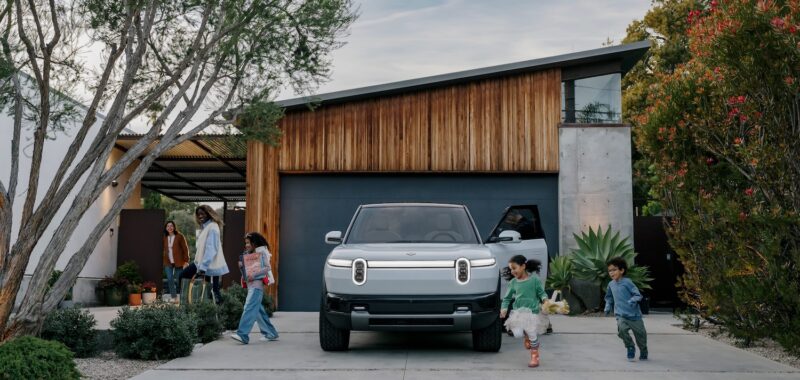Like other electric vehicle start-ups, Rivian (RIVN 3.59%) is trying to find its footing in an increasingly competitive market. The company has built a strong brand, outpacing all other automakers for customer satisfaction two years in a row, according to Consumer Reports.
However, the company’s meager vehicle production for 2024 and substantial losses have left some investors concerned about Rivian’s future. Where could the company end up a year from now? Let’s take a look.

Image source: Rivian.
Fewer production constraints, more gross profit potential
Rivian recently reported its 2024 production and delivery numbers, which were mostly unimpressive from the previous year. Production fell 13.5% to 49,476 vehicles, and deliveries rose just 3% to 51,579.
The company hasn’t released its 2025 production and delivery estimates yet, but I wouldn’t be surprised if Rivian’s management is cautious about its projections. Rising costs and slower-than-expected consumer demand in the broader EV market have hampered the company’s progress.
However, Rivian recently said that component shortages that caused problems in 2024 “are no longer a constraint on Rivian’s production.” This could mean that Rivian’s production might return to growth, rather than a decline, in the coming year. I’ll be watching this closely as a Rivian investor myself, to see if both demand and production will increase in 2025.
Giving inventors hope, Rivian’s management says the company will have a gross profit in the fourth quarter (Rivian will report its financial results on Feb. 20).
Rivian significantly cut costs in 2024, including a 35% decrease in material costs for its vans and a similar reduction for its other vehicles, by reengineering some of its designs. That move should continue to pay off over the next year and beyond, potentially keeping the company in gross profit territory.
Paving the way for new models
Rivian debuted its upcoming R2 and R3 models in 2024 and said that production will begin in early 2026. While initial production will likely be limited, these new models could potentially be a game-changer for Rivian.
Rivian’s R1T pickup truck starts at $69,900, and its R1S SUV has a base price of $75,900. Meanwhile, the smaller, mid-sized R2 SUV has a starting price of just $45,000. A big hurdle in luring consumers away from gas-powered vehicles has been the generally high prices of EVs. But the cheaper R2 (and even smaller R3 crossover) could go a long way in convincing car buyers to choose Rivian. R3 pricing hasn’t been released yet but is estimated at around $40,000.
The company’s management said a few months ago that “Rivian believes its R2 and R3 vehicle lines will be critical drivers in the company’s long-term growth and profitability.” Over the next year, the company will likely make significant strides to get these models close to production.
It will be further along in its partnership with Volkswagen
Late last year, Rivian and Volkswagen began a joint venture in which Rivian would receive funding from Volkswagen in exchange for Rivian providing electrical architecture and in-vehicle technology to Volkswagen.
The joint venture gives Rivian up to $5.8 billion, of which $2.3 billion was already paid out in 2024. Throughout 2025 and 2026, Rivian will receive an additional $2 billion in equity, along with the option of taking out a $1 billion loan.
This partnership is still in the early stages, so it’s unclear where it will go from here or how it could develop. But what’s apparent so far is that Volkswagen views Rivian’s technology as a potential asset to its future models (Volkswagen will incorporate some Rivian tech by 2027).
Rivian investors need to keep a close eye on any updates or expansion of this partnership over the next year. But currently, more equity and access to more funding should help Rivian.
More uncertainty
As with any stock, investors should expect some uncertainty with Rivian over the next year. Specifically, President-elect Trump has indicated that he’s open to ending EV tax credits, which are worth up to $7,500. Rivian’s vehicles no longer qualify for the credits, but its future vehicles like the R2 might if the credits don’t get axed.
If you own Rivian shares or are thinking of adding some to your portfolio, keep in mind that the electric vehicle maker still has a long road ahead. I’m optimistic about how the company is managing its losses and creating new partnerships, but there are still many unknowns.

